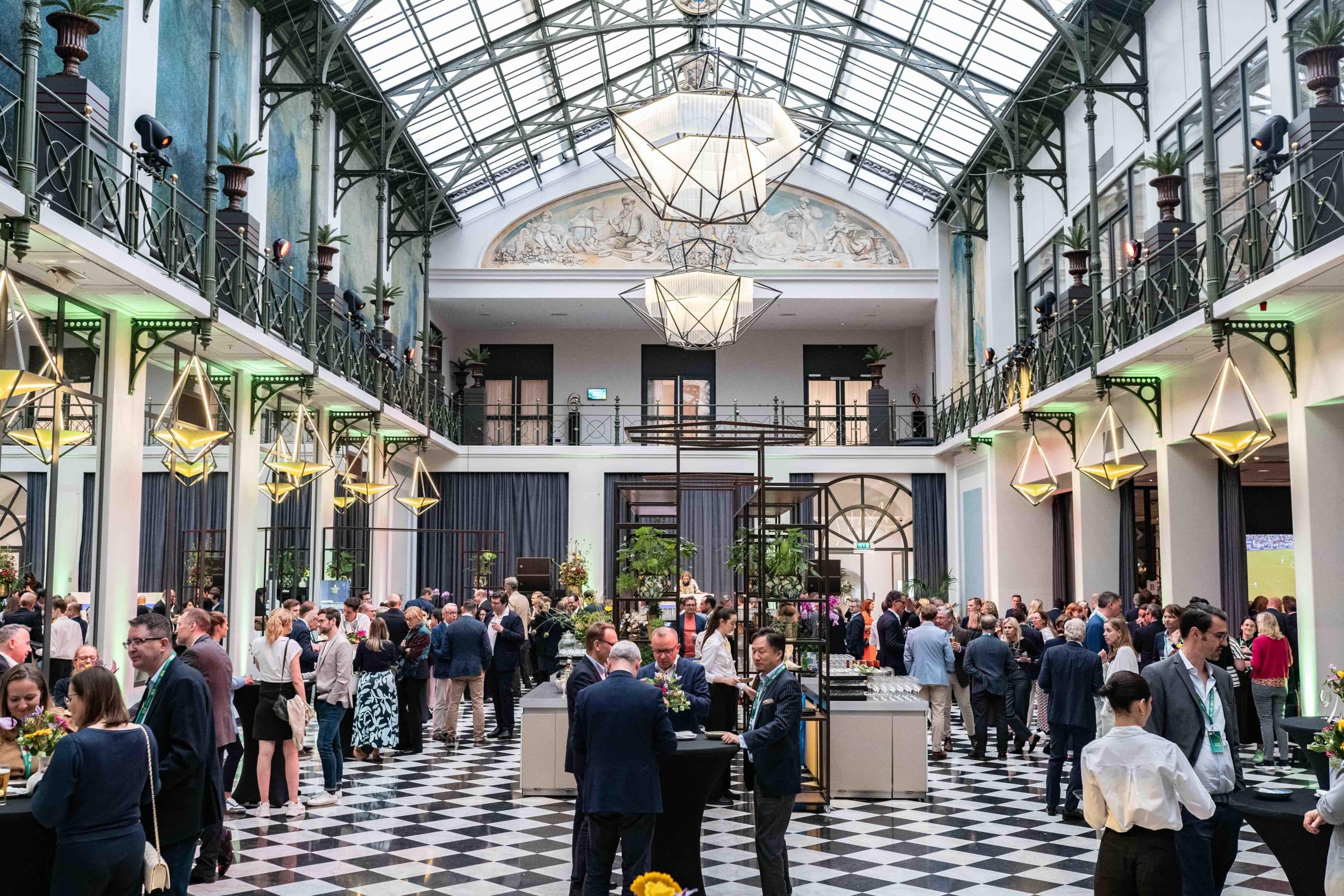Those of a certain age will remember a time before LinkedIn. Until Reid Hoffman launched the platform in 2003, the only professional networking took place in person, lingering over long lunches or hobnobbing at industry events, trade shows, award celebrations and mixers organised by the trusty British Networking International (BNI) and its ilk.
Over the past two decades, the digital revolution has impacted every industry across the world – and professional networking is no different. LinkedIn has a billion users, while Slack has become the byword for professional communication and collaboration.
The online migration was accelerated by the pandemic, which prompted widespread adoption of Zoom and Teams. Unable to meet in the real world? Come to our webinars or our digital conferences. But the ease of access has its downsides. Can digital interactions ever truly replicate the creativity and connection generated by a real-world rendezvous?

Professional networks are a vital part of building successful careers. We meet our mentors, future bosses, partners, suppliers and prospective customers through these conversations. Whether chatting online, or face to face, bonds are formed and insights shared.
There is no denying that online networking tools have their place in the modern world. They open doors for those who would struggle to attend real-world events, such as those with disabilities and parents of young children. Night owls can send messages at 3am while time-poor execs can build time for networking around a busy schedule.
It’s also a way of meeting people from different cities and countries, gaining a new perspective – without the expense of getting on a plane or train. In a world striving to reach Net Zero by 2050, there are clear environmental benefits to meeting new contacts from the comfort of your home and saving carbon in the process.
It is quick and easy to make online connections: send a request and, a minute later, you’re in, whizzing over a pitch to your target customer, pinging over a CV or asking for advice. This process might have taken hours in the real world, working the room, making small talk, and hoping you can snag two minutes with the person you’re really here to meet.
As artificial intelligence (AI) continues to disrupt the art of networking, we may find ourselves making even more nuanced and valuable professional connections online, as the algorithms learn more about what we need – a job offer? A stockist? Inspiration? Data analytics will also help us hone our online communication skills, as we will be able to review which messages create real engagement.

Human beings are social animals; we need to spend time together in order to be happy and healthy. Studies have shown that even introverts, who struggle with social situations, benefit from spending time with other people.
The prevalence of social media has actually made many of us feel more isolated. Loneliness is the new public health crisis, with studies showing that its impact on your health is as bad as smoking. People go to online platforms to find connections there but research has now proven this only makes you feel lonelier.
When you physically attend an event, several things happen. You recharge your social batteries. You are able to read so much more into conversations, through observing body language, maintaining eye contact, and interacting physically with others – can any digital interaction really mimic a firm handshake?
You create a lasting impression, as people aren’t just reading your name or words on the page, they are noticing your eye colour, your presence, your listening skills, and the fact you too cannot resist a canape.
In a real-world context, you open the door to serendipity. When a conversation unexpectedly leads to a new route to market, or customer, for example. This is less likely to happen online. Has any online channel adequately mimicked the IRL benefit hearing interesting conversations drift across the room?

Not long ago, technologists were predicting a mass migration to the digital realm. They floated the idea that people would start attending gigs, events and parties virtually, wearing a VR or AR headset. But this terrifying prediction never came to pass.
Here at Marble, we draw inspiration and creativity from the physical world. The team is always out and about, visiting potential venues and getting fired up by the ambience and energy of London’s galleries, installations and pop-up spaces. Online research is a poor substitute for feeling the atmosphere in the room, experiencing the unique acoustics, and building an emotional connection to a space.
Online brainstorming sessions are okay but nothing beats the power of getting people in a room together, swapping ideas, and going off on tangents. We are great believers in the notion of “creative optimism”: we leave space for the magic to happen and know that people do their best work when they put their heads together. Watch the way musicians in a jam session effortlessly knit their rhythms and beats to create a new and beautiful melody. This is not dissimilar to the creative process.
The future of professional networking is a hybrid beast: real-world encounters will foster online connections and vice versa. Without face-to-face contact with others, we are denying our own humanity and depriving ourselves of the richness and joy that comes from interacting with others. Without online networks, we would erode efficiency and cut ourselves off from a vast and fascinating global pool of professional contacts.
Virtual events and online connections have value, but they can never replace the connections and relationships forged in the real-world.